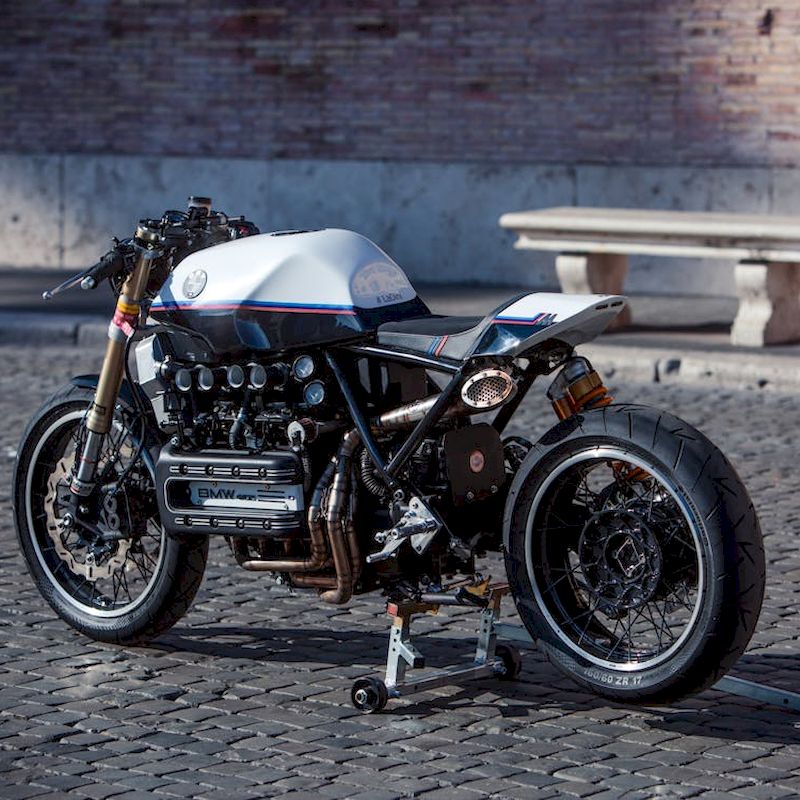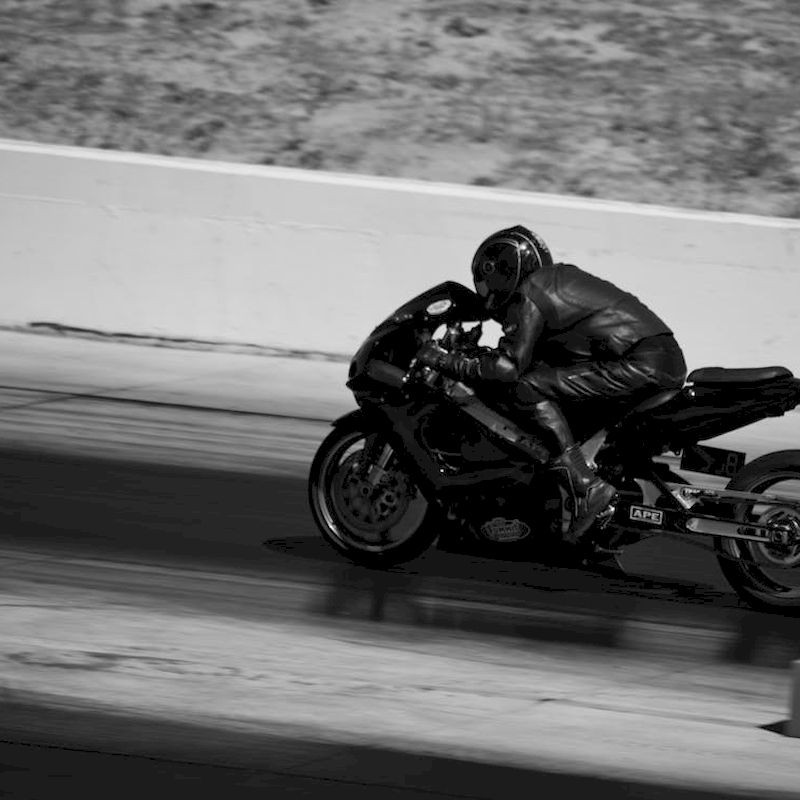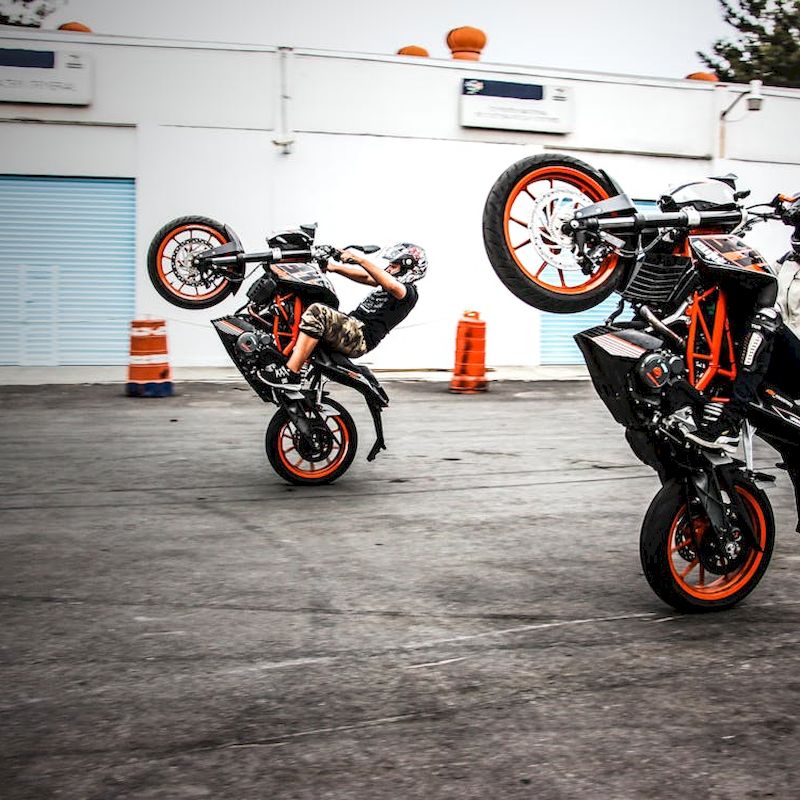For many motorcycle enthusiasts, speed is a driving force behind their passion for riding. Whether you own a sportbike designed for speed or a cruiser aimed at comfort, the desire to enhance performance is a common aspiration. There exists a wealth of methods on how to make a motorcycle faster, which range from simple modifications to comprehensive upgrades. Understanding the mechanics and physics of your motorcycle is crucial as this knowledge will guide you through improving performance in a safe and effective manner. From adjusting your bike’s aerodynamics to tuning the engine and investing in lightweight components, many avenues can lead to increased speed and better handling. In this article, we will explore a plethora of strategies and techniques that will help you make your motorcycle faster while maintaining the balance of strength and safety.

Understanding Motorcycle Performance Basics
Before diving into how to make a motorcycle faster, it’s essential to grasp the basics of motorcycle performance. Understanding how various components of a motorcycle function will help you pinpoint areas for improvement effectively.
Core Components of a Motorcycle
- Engine: The heart of any motorcycle, the engine determines the bike’s power output and speed. More horsepower generally translates to better performance.
- Transmission: This system transfers power from the engine to the wheels. The type and condition of your transmission can impact acceleration and overall speed.
- Weight: A lightweight motorcycle is typically faster and more agile than a heavier counterpart. Reducing weight can significantly enhance speed.
- Aerodynamics: The shape of your motorcycle affects air resistance, which impacts how fast you can go. Better aerodynamic designs mean less wind resistance.
Power-to-Weight Ratio
The power-to-weight ratio refers to the amount of horsepower your motorcycle produces relative to its weight. A higher ratio means better acceleration and sharper handling. Focusing on improving this ratio is a vital aspect of making your motorcycle faster.
Tuning and Modifications
Understanding how different tuning and modifications affect your motorcycle is crucial for achieving optimal performance. Upgrades may include changes to the exhaust system, carburetors or fuel injection, and gearing. Let’s explore how these modifications can enhance speed.
Engine Modifications for Speed
One of the most direct ways on how to make a motorcycle faster is to explore engine modifications. Various approaches can significantly improve your bike’s performance.

Upgrading the Exhaust System
An aftermarket exhaust system can dramatically enhance the flow of exhaust gases, leading to improved engine efficiency and power. Here’s how to choose the right exhaust:
- Performance Gains: Search for systems that are designed explicitly for power gains. A well-designed exhaust will optimize back pressure and increase horsepower.
- Material Considerations: Consider lightweight materials such as titanium or carbon fiber. These materials reduce weight while enhancing performance.
Carburetor Tuning or Fuel Injection Adjustment
Proper mixing of air and fuel is essential for optimal engine performance. Making adjustments to carburetors or fuel injection systems can help achieve this:
- Changing Jetting: If your motorcycle has a carburetor, adjusting the jetting can improve throttle response and power.
- ECU Remapping: For fuel-injected bikes, remapping the ECU (Engine Control Unit) will allow for better air-fuel mixture under various conditions, providing better acceleration.
Installing High-Performance Air Filters
Air filters significantly impact engine breathing. Upgrading to a high-performance air filter improves airflow and increases engine efficiency, leading to more power. Here are a few considerations:
- Types of Filters: Consider options like K&N or BMC filters, which offer superior filtration and airflow.
- Maintenance: Ensure regular cleaning and servicing of your air filters to sustain performance.
Gearing Changes to Enhance Acceleration
Altering the gearing on your motorcycle can also contribute to its overall speed and performance. Each motorcycle has a specified gearing ratio that determines how power is delivered to the wheels.
Sprocket Changes
- Selecting Sprockets: Changing your front or rear sprocket can increase acceleration without altering your top speed. Smaller front sprockets or larger rear sprockets will generally provide quicker acceleration.
- Effects on Speed: While gearing changes can boost acceleration, be mindful that it might reduce your top speed. Balancing your needs for acceleration with desired speed is essential.
Chain and Sprocket Maintenance
Keep your chain and sprockets in good condition to ensure maximum performance. A well-maintained chain will give you better power transfer and response, contributing to faster acceleration.
Reducing Weight for Better Performance
Decreasing your motorcycle’s overall weight is another effective strategy for how to make a motorcycle faster. Lighter bikes are more agile and quicker to respond.
Lightweight Components
- Replace Stock Parts: Consider replacing heavier stock components with lightweight alternatives. Upgrading to parts made of carbon fiber, aluminum, or titanium can yield significant weight reductions.
- Streamline Accessories: Remove unnecessary accessories and components that add weight, such as heavy mirrors or bulky fenders.
Rider Considerations
- Gear Choices: The gear you wear can also affect overall weight. Consider lightweight, yet protective riding gear that won’t hinder your performance.
- Rider Fitness: Staying fit as a rider can also impact your control and handling of the motorcycle, potentially enhancing performance.
Aerodynamics Optimization
The design of your motorcycle significantly influences its speed capabilities, particularly when it comes to aerodynamic effectiveness. Adjusting your bike’s setup can help minimize air resistance.
Fairings and Windshields
Adding fairings or windshields can improve aerodynamics, enabling smoother airflow over the motorcycle. Here are some key points:
- Performance Fairings: Look for performance fairings designed specifically for your motorcycle model. These will reduce drag while improving aesthetics.
- Windshield Adjustment: The height and angle of windshields can influence airflow, so select one that suits your riding style and offers performance benefits.
Riding Position
Adjusting your riding posture can also reduce drag. A more aggressive position helps the rider slice through the wind:
- Body Positioning: Leaning closer to the gas tank and tucking your elbows in can minimize wind resistance, thus enhancing speed during rides.
- Handlebar Adjustments: Consider adjusting your handlebars to allow for a more aerodynamic posture if necessary.
Tire Considerations for Improved Speed
The tires you use can deeply impact both speed and handling. Selecting the right tires for your motorcycle is crucial.
Tire Type
- Performance Tires: Investing in high-performance tires provides better grip, allowing for more aggressive riding styles and faster acceleration. Consider brands like Michelin or Pirelli that offer track-ready compounds.
- Tire Pressure: Regularly check and maintain tire pressure, as under-inflated tires can create drag, negatively affecting speed and handling.
Tread Patterns
Choose appropriate tread patterns based on your riding style:
- Street Tires: For everyday riding, select tires designed for grip and durability.
- Racing Tires: If you participate in racing, opting for softer compounds with more aggressive tread patterns can yield higher performance.
Tuning and Maintenance for Speed
Regular tuning and maintenance are necessary steps for ensuring that your motorcycle functions optimally and achieves the desired speed.
Regular Servicing
- Frequent Maintenance: Schedule regular maintenance for checks on braking systems, suspension, and electrical systems. Well-functioning components contribute significantly to a motorcycle’s overall performance.
- Inspection of Critical Parts: Pay attention to critical components such as spark plugs, air filters, and fluid levels, as these can affect engine performance.
Professional Tuning
- Dyno Tuning: Consider having your motorcycle professionally tuned on a dynamometer (dyno). This allows for specific adjustments based on performance data and helps achieve optimal results.
- Consult with Experts: While DIY modifications can be rewarding, consulting with professionals can provide insights you may not have considered.
Riding Techniques for Enhanced Performance
In addition to mechanical modifications, the way you ride contributes significantly to your motorcycle’s overall speed.
Smooth Throttle Control
- Gentle Acceleration: Smoothly rolling on the throttle during acceleration helps maximize power delivery and traction. Avoid abrupt movements, as this can cause loss of control.
- Throttle Positioning: Experiment with different throttle positions to see how your motorcycle responds in various situations.
Cornering Skills
- Body Positioning: Position your body for optimal cornering, leaning into curves for improved grip and stability. Practice effective body positioning to enhance performance during turns.
- Releasing Brakes: Gradually releasing the brakes while entering a corner allows for a smoother transition and better control.
Anticipation
- Watch for Road Conditions: Always be aware of the road conditions and anticipate obstacles. Being prepared can help you react quicker, maintaining speed through a ride.
- Plan Your Route: Familiarize yourself with your riding routes to anticipate curves and straightaways. This preparation will help you ride smoothly and effectively.

Conclusion: Maximizing Your Motorcycle’s Speed Potential
Learning how to make a motorcycle faster involves an amalgamation of understanding, strategy, and technical modifications. From enhancing your engine to adjusting your riding techniques, numerous factors contribute to increasing your bike’s speed and performance. Remember to ensure that any modifications made do not compromise the safety of your motorcycle or your riding experience.
Regular maintenance and tuning also play crucial roles in achieving the best results. As motorcycle enthusiasts, we should embrace improvements and modifications while respecting the importance of protective gear and safe riding practices. By following the strategies discussed in this comprehensive guide, you can get the most out of your motorcycle and enjoy exhilarating rides that showcase its enhanced speed and performance. So gear up, hit the open road, and experience the thrill of a faster motorcycle.